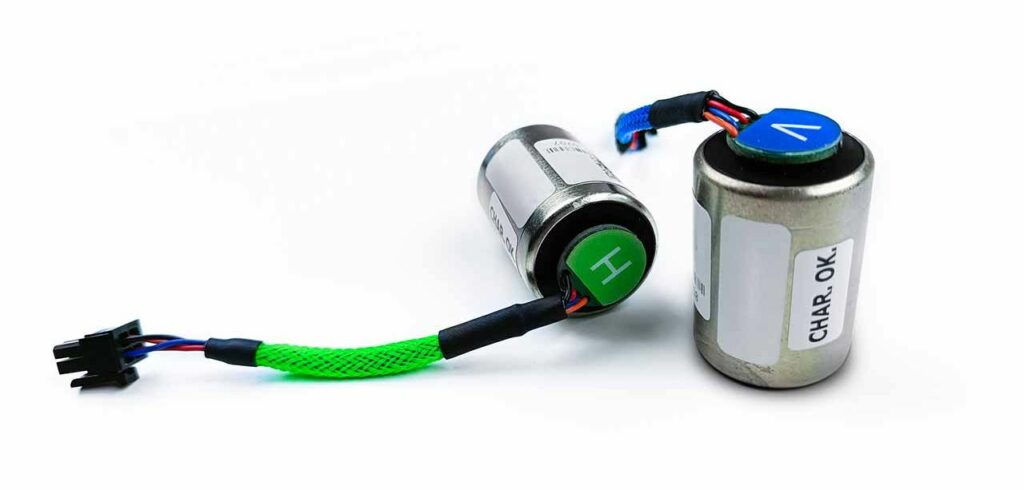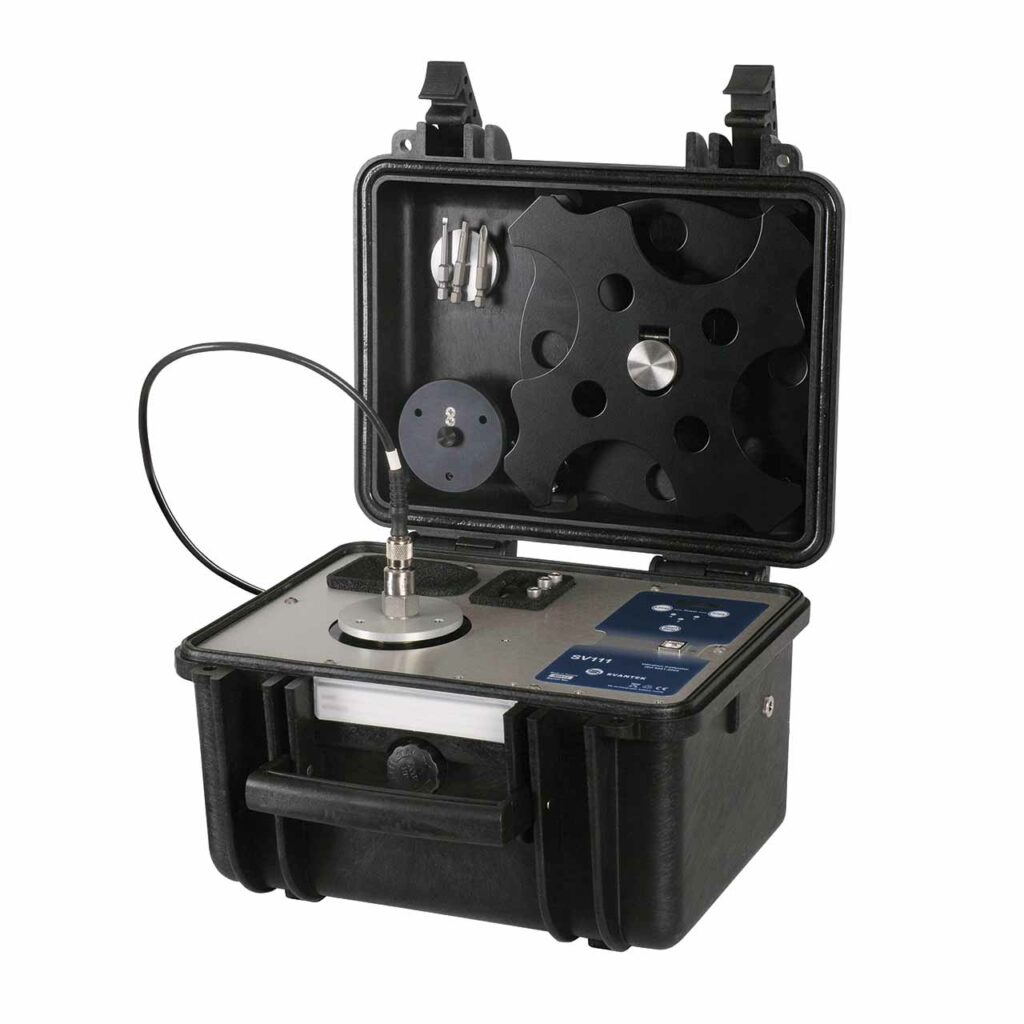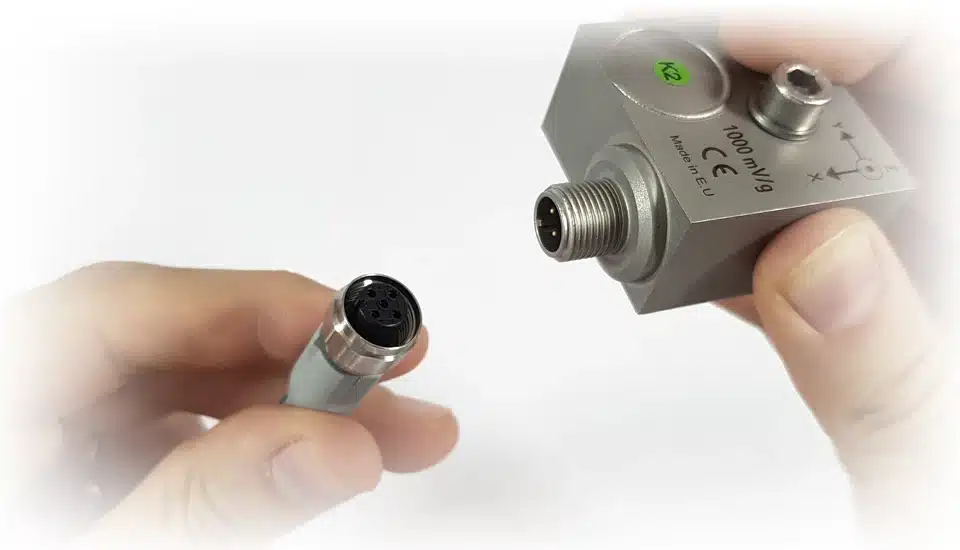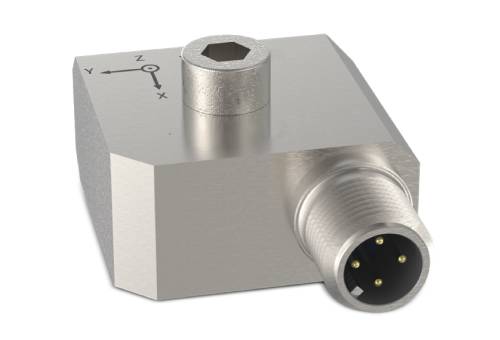What are transducer categories?
Transducers can be divided into sensors, actuators, and transceivers.
- Sensors: They convert physical phenomena into electrical signals. Examples include measurement microphones (condenser, electret, and MEMS microphones) and vibration transducers (accelerometers, geophones, optical laser vibrometers, LVDTs, and laser displacement sensors).
- Actuators: They convert electrical signals into physical actions. Examples include speakers (which convert electrical signals into sound waves), mechanical actuators (vibration exciters, shakers), and electrostatic actuators (used for precise movements and calibrations).
- Transceivers: They transmit and receive signals. Examples include ultrasonic transceivers used in medicine (ultrasonography) and sonar systems, as well as acoustic modems used in underwater communication.
What are the types of sound and vibration transducers?
Measurement Microphones:
Condenser Microphones: They use changes in capacitance to convert sound waves into electrical signals.
Prepolarised Condenser Microphones: These have an internal charge, which simplifies their power supply system, making them easier to use and more practical in various applications.
- Electret microphones are a type of prepolarised condenser microphone. They feature a permanently charged dielectric (electret), eliminating the need for an external polarisation source. They are widely used due to their durability, low cost, and compact design, making them commonly utilised in consumer devices such as phones and audio recorders.
Externally Polarised Condenser Microphones: These require an external power source for polarisation and are typically used in laboratories for precise measurements. They feature a wider frequency range and higher sensitivity compared to prepolarised microphones, making them ideal for applications requiring maximum accuracy and a broad frequency spectrum.
MEMS Microphones utilise externally polarised condenser microphones. MEMS (Micro-Electro-Mechanical Systems) microphones are built using semiconductor technology and microfabrication. They are widely used in consumer electronics, such as smartphones, laptops, and speech recognition devices, due to their small size, high sensitivity, and low power consumption.
Vibration Transducers:
Accelerometers:
- Piezoelectric Accelerometers: These use piezoelectric materials to generate an electrical signal in response to mechanical stress caused by vibrations. They are widely used in industrial and scientific applications.
- Capacitive Accelerometers: They detect vibrations by measuring changes in capacitance caused by the movement of micro-elements relative to fixed electrodes. This technology is the foundation for MEMS accelerometers, where microscopic mechanical elements move in response to acceleration, changing capacitance and generating an electrical signal corresponding to the vibration level.
- MEMS Accelerometers: These use microfabrication technology to produce compact, highly sensitive accelerometers based on capacitive changes. They are used in automotive, consumer electronics, and industrial monitoring systems. Their small size, low power consumption, and high precision make them ideal for measuring acceleration in various applications, such as vehicle safety systems, smartphones, and vibration monitoring devices.
Velocity Transducers (Geophones): These measure ground vibrations by converting the mechanical movement of a coil in a magnetic field into electrical signals. They are widely used in seismic surveys and geophysical research for detecting ground vibrations.
Impact Hammers: Used to generate controlled impacts for modal analysis in NVH (Noise, Vibration, and Harshness) testing, these devices convert mechanical impact energy into a known force for structural testing. They typically use piezoelectric accelerometers to measure vibrations and forces generated during impacts.
Optical Laser Vibrometers: These use laser technology to measure vibrations without physical contact, detecting vibration frequency and amplitude through the Doppler shift of reflected laser beams.
Displacement Transducers:
- Linear Variable Differential Transformers (LVDTs): These measure linear displacement by converting mechanical movement into an electrical signal.
- Laser Displacement Sensors: These use laser beams for precise measurement of distance or displacement, often used in applications requiring non-contact measurements.
Audio Transducers:
- Speakers: These convert electrical signals into sound waves through electromagnetic induction, where an alternating current flows through a coil, moving it within a constant magnetic field and generating a force that moves the diaphragm.
- Dynamic Microphones: Widely used for voice recordings and performances, they convert sound waves into electrical signals through electromagnetic induction. They have a diaphragm attached to a coil of wire that moves within the magnetic field of a magnet, generating an electrical current. Dynamic microphones are known for their durability and ability to handle high sound pressure levels, making them ideal for live performances and studio recordings.

Other transducer examples beyond sound and vibration
Although much focus is on audio or vibration measurements, transducers appear in a variety of other applications:
- Pressure Transducers (Load Cells) convert force or pressure into electrical signals (e.g., for weighing systems).
- Thermocouples turn temperature differences into voltage, used for industrial or engine temperature monitoring.
- Photocells change light intensity into electrical signals, enabling automation in lighting systems or camera sensors.
- Hall Effect Transducers measure magnetic fields or current, often used in position sensing or circuit protection.
Such wide-ranging transducers underscore their importance for measurement and control tasks in nearly every industry.
Marine transducers
Marine transducers measure underwater parameters like depth, speed, and temperature. They are mounted in different ways depending on hull type and vessel needs:
- Transom Mount Transducers attach to the boat’s rear (transom), easy to install but can cause drag at higher speeds.
- Thru-Hull Transducers are installed through the hull for direct water contact, providing highly accurate readings.
- In-Hull Transducers sit inside fibreglass hulls, avoiding external drag but requiring a special fluid tank for proper signal transmission.
Choosing the right marine transducer mount ensures stable measurements and reduces interference from turbulence or prop wash.
What are the main transducer characteristics?
The main characteristics of transducers in sound and vibration applications include:
Operating Range:
- Dynamic Range: The ratio between the largest and smallest amplitude signals that the transducer can effectively handle. A larger dynamic range allows for accurate measurement of both very weak and very strong signals.
- Internal Noise: The noise generated within the transducer that can affect the quality of the measurement signal. Lower internal noise improves the accuracy and reliability of measurements.
- Sensitivity: The extent to which the transducer responds to a given physical input, usually expressed as output signal per unit of input (e.g., millivolts per pascal). Higher sensitivity allows for the detection of smaller changes in the measured phenomenon.
- Frequency Range: The frequency range within which the transducer can accurately respond to input signals. A wide and flat frequency range ensures that the transducer can measure or reproduce signals across a broad spectrum. The frequency range is critical in sound and vibration analysis applications, where accurate measurement of various frequencies is essential.
- Temperature Range: The temperature range within which the transducer can operate effectively without significant performance degradation. This ensures that the transducer works correctly in different environmental conditions, making it suitable for various applications.
- Weight: The physical weight of the transducer. This is especially important in portable applications or where the transducer must be mounted on delicate structures without affecting their behaviour.
Compatibility:
- Power Source: The type of power required for the transducer to operate (e.g., battery-powered, external power source). Compatibility with available power sources is crucial for seamless integration into existing systems. For accelerometers, the standard is IEPE/CCLD powering, which ensures stable and low-noise operation.
- Output Quantity: The type of output signal produced by the transducer (e.g., voltage, current). Ensuring compatibility with the measuring instruments or meters to which the transducer will be connected is essential for accurate data collection and analysis.
Considering these characteristics, one can select the most suitable transducer for specific sound and vibration applications, ensuring optimal performance and accurate measurements.
Transducer energy efficiency
No transducer can convert energy perfectly; some portion invariably becomes heat or another unwanted form. For example:
- Incandescent lamps emit more heat than light, making them comparatively inefficient.
- Antennas can approach high efficiency, radiating most of their input power as electromagnetic energy.
Understanding these efficiency levels and losses helps in selecting transducers that offer the best performance for your application with minimal wasted energy.
How to choose the right transducer?
Choosing the right transducer involves matching the transducer’s characteristics to the specific requirements of your application:
Define the Application Requirements: Determine the range of physical quantities (e.g., sound levels, vibrations) you need to measure.
Consider the acceptable level of internal noise for high-precision applications.Assess Sensitivity: Ensure the transducer has the appropriate sensitivity to detect the smallest changes in the physical phenomenon you are measuring.
Evaluate Frequency Range: Identify the frequency range of interest for your application and ensure the transducer covers this range with a flat and wide frequency response.
Check Temperature Range: Choose a transducer that operates effectively within the temperature conditions of your application environment.
Consider Weight: Ensure the transducer is lightweight enough for portable applications or mounting on delicate structures.
Verify Compatibility: Ensure the transducer can be powered by the available sources in your setup.
Ensure the transducer’s output signal is compatible with your measuring instruments or data acquisition systems.
By systematically evaluating these criteria against your application requirements, you can select a transducer that provides accurate, reliable, and efficient measurements, ensuring that the transducer’s characteristics are well-matched to the demands of your specific application.
Signal conditioning and testing procedures
Once a transducer generates a raw signal, it often needs processing before final analysis. Common steps include:
- Amplification: Boosting low-level signals to a measurable voltage range.
- Filtering: Removing noise or unwanted frequencies that could distort measurements.
- Digitising: Converting analogue signals into digital data for easier recording and processing.
Testing procedures may include baseline checks in controlled conditions and exposure to real-world environments (e.g., vibration, temperature extremes) to verify consistent performance.

How to ensure the correct use of transducers in sound and vibration applications?
Ensuring the correct use of transducers involves proper connection, powering, calibration, and regular maintenance. Here’s a concise guide:
Proper Connection
- Cables and Connectors: Use high-quality cables and connectors to ensure reliable signal transmission. Check for any signs of wear or damage and replace them if necessary.
- Secure Connections: Ensure all connections are secure to avoid signal loss or interference.
Correct Powering
- Power Requirements: Make sure the transducer is powered according to its specifications, whether it requires an external power source or operates on batteries.
- Power Supply Quality: Use stable and clean power sources to prevent noise and ensure accurate measurements.
Calibration
- Initial Calibration: Calibrate the transducer according to its sensitivity specifications before use. This ensures the transducer provides accurate and reliable readings.
- Hand-held Calibrators: Use hand-held calibrators for in-situ checks, especially for portable or field applications.
Periodical Verification
- Regular Calibration: Schedule regular calibration sessions to maintain accuracy over time. This helps in identifying any drifts or changes in sensitivity.
- Verification with Complete System: Transducers should be checked as part of the complete measurement system, including sound or vibration meters, to ensure overall accuracy and reliability.
In-situ Checks
- Hand-held Calibrators: Perform periodic in-situ checks using hand-held calibrators to verify the transducer’s performance in its actual operating environment.
- Quick Verification: These checks allow for quick verification and adjustment if needed, ensuring ongoing accuracy.
Practical Tips for Ensuring Correct Use
- Installation: Properly install the transducer according to the manufacturer’s guidelines to avoid errors in measurements.
- Environmental Considerations: Ensure that the transducer is suitable for the environmental conditions in which it will be used, including temperature, humidity, and exposure to dust or chemicals. Additionally, make sure that the transducer is resistant to electromagnetic interference, especially near power equipment and radio devices.
- Documentation: Keep detailed records of all calibration and verification activities to track the transducer’s performance over time.
By following these steps, you can ensure the correct use of transducers in sound and vibration applications, maintaining the accuracy and reliability of your measurements.
Expanded calibration approaches
Beyond basic checks with hand-held calibrators, other calibration methods include:
- Laboratory Calibration: Using traceable reference standards under controlled conditions.
- In-situ Reference Signals: Some systems provide a built-in reference or self-test signal to confirm performance without disassembling the setup.
Periodic comparison against recognised benchmarks helps detect drift early and ensures long-term measurement integrity.


